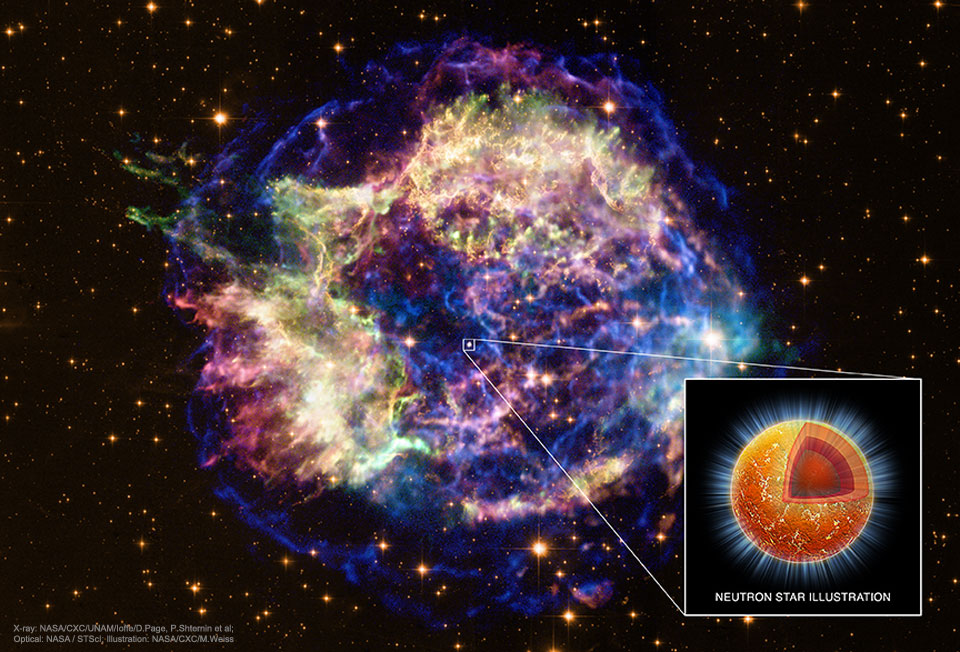
Image Credit: X-ray: NASA/CXC/UNAM/Ioffe/D.Page, P. Shternin et al; Optical: NASA/STScI;
Illustration: NASA/CXC/M. Weiss
Explanation: The bright source near the center is a neutron star, the incredibly dense, collapsed remains of a massive stellar core. Surrounding it is supernova remnant Cassiopeia A (Cas A), a comfortable 11,000 light-years away. Light from the Cas A supernova, the death explosion of a massive star, first reached Earth about 350 years ago. The expanding debris cloud spans about 15 light-years in this composite X-ray/optical image. Still hot enough to emit X-rays, Cas A's neutron star is cooling. In fact, years of observations with the orbiting Chandra X-ray Observatory find that the neutron star is cooling rapidly -- so rapidly that researchers suspect a large part of the neutron star's core is forming a frictionless neutron superfluid. The Chandra results represent the first observational evidence for this bizarre state of neutron matter.